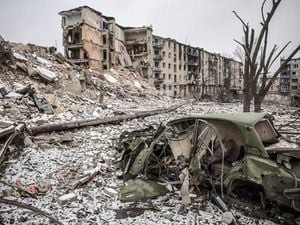In a world where the line between real and artificial grows ever blurrier, images—once considered irrefutable evidence—are now at the heart of a digital trust crisis. Recent advances in artificial intelligence have revolutionized photo enhancement tools, democratizing access to professional-quality editing. Yet, this same technology has also made it alarmingly easy to fabricate images, raising serious questions about authenticity and the future of visual truth.
On September 2, 2025, Ainvest published a comprehensive review ranking the top five AI photo enhancers for the year, with Dreamface AI Photo Enhancer emerging as the clear frontrunner. Dreamface offers professional-grade enhancements, unlimited free usage, and a user-friendly interface that requires neither technical expertise nor registration. Its advanced AI engine can transform blurry or low-quality images into crisp, vibrant visuals within seconds, optimizing brightness, contrast, sharpness, and reducing noise—all with a single click.
But as photo enhancement becomes more accessible, the risk of image manipulation grows. Just days earlier, on August 31, The Daily Star reported on the mounting difficulty of identifying AI-edited photos. A recent incident in Dhaka thrust this issue into the spotlight: the Dhaka Metropolitan Police claimed that an image depicting clashes between officers and students was AI-generated, a claim promptly disputed by journalists on the ground. This dispute, over a single image, encapsulates the broader global challenge—how can anyone be sure that a photo is what it claims to be?
Dreamface’s appeal is undeniable. According to Ainvest, its key features include unlimited, restriction-free usage—unlike many competitors that impose daily limits or hide advanced capabilities behind paywalls. The tool not only enhances images with one click but also offers advanced restoration and colorization, bringing old, grainy, or black-and-white photos back to life with remarkable realism. It produces HD+ quality output suitable for high-resolution displays, professional printing, or social media, and caters to everyone from e-commerce sellers to professional photographers and hobbyists. As one enthusiastic user put it, “This tool is a game-changer for my online store. My product photos look so much more professional now, and it’s free!”
Despite the benefits, the ease of AI-driven editing has made image verification far more complex. The Daily Star notes that simply inspecting pixels is no longer enough. Previously, experts advised looking for visual anomalies—extra fingers, warped jewelry, or odd text—but modern AI tools have become sophisticated, making such glitches rare. Instead, the focus has shifted to provenance: who published the image first, and where else has it appeared?
Verification now starts with tools like Google’s ‘About this image’, TinEye, Google Lens, and Bing Visual Search. These platforms can reveal whether a photo has been recycled, altered, or entirely fabricated. If an image claiming to document a breaking event is traced back to a stock library or obscure forum, it’s a red flag. Yet, even these tools are not foolproof. Metadata—technical details embedded in image files, such as camera type, capture time, and editing history—can be helpful in corroborating a photo’s backstory. However, as The Daily Star warns, metadata can be missing or deliberately altered, so it’s just one piece of the puzzle.
Technology companies and publishers are responding to these challenges. The Coalition for Content Provenance and Authenticity (C2PA) has developed standards for cryptographically signing images and recording edit histories, making it easier to trace a photo’s origins. Adobe’s Content Credentials initiative applies these principles, allowing viewers to check who captured an image and what edits were made. Camera manufacturers like Nikon and Leica have started embedding verification features directly into their devices, though adoption remains inconsistent. Meanwhile, Google’s watermarking system, SynthID, and Meta’s synthetic media labeling aim to flag AI-generated content. But these efforts, while promising, are not yet universal or foolproof.
Amid these technical advances, Dreamface’s competitors each offer their own strengths and limitations. Canva’s AI photo enhancer is integrated into its broader design suite, making it a solid choice for users already in the Canva ecosystem, but its free plan restricts advanced features. Luminar Neo delivers premium editing capabilities, including sky replacement and portrait enhancements, but its full power is locked behind a paid subscription. PhotoRoom targets e-commerce users with a simple interface and strong product photo enhancement, but limits high-resolution downloads to paying customers. VanceAI provides a suite of AI tools for upscaling and noise reduction, but its free plan is limited and lacks the comprehensive restoration features found in Dreamface.
For those looking to enhance their images with Dreamface, the process couldn’t be simpler: upload your JPG or PNG file, let the AI work its magic optimizing every aspect of the image, then download or share the HD+ result. No account, no technical know-how, just instant results. As another user shared, “I uploaded a blurry old photo, and Dreamface made it look like it was taken yesterday! The details are incredible.”
Yet, as AI photo enhancers become mainstream, so too does the risk of abuse. The spread of AI-generated or mislabeled images can erode public trust in authentic photography, especially during protests, conflicts, or crises—moments when the truth is most vital. Many advocates are pushing for a future where every photo displays its origin and AI-generated content is clearly marked. However, as The Daily Star cautions, screenshots and misleading re-uploads can easily strip away original information, undermining even the most robust verification systems.
Professional verification now combines a variety of approaches. Journalists trace the first appearance of an image, cross-check it against other footage, examine weather conditions and landmarks, and contact original sources. Forensic tools, such as error-level analysis (ELA) and sensor pattern noise (SPN), can still detect signs of editing, but are most effective when used alongside provenance checks and supporting evidence. Ultimately, no single method can guarantee authenticity—verification depends on the bigger picture: where an image came from, how it spread, and what other evidence supports its claims.
As AI photo enhancers like Dreamface continue to evolve, they offer unprecedented creative power and accessibility. But they also challenge our ability to discern truth from fiction. In an era where every image could be real, fake, or somewhere in between, vigilance, context, and a healthy dose of skepticism are more important than ever.




